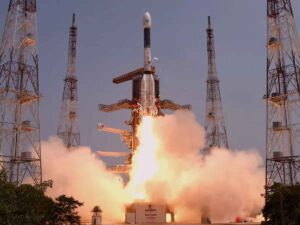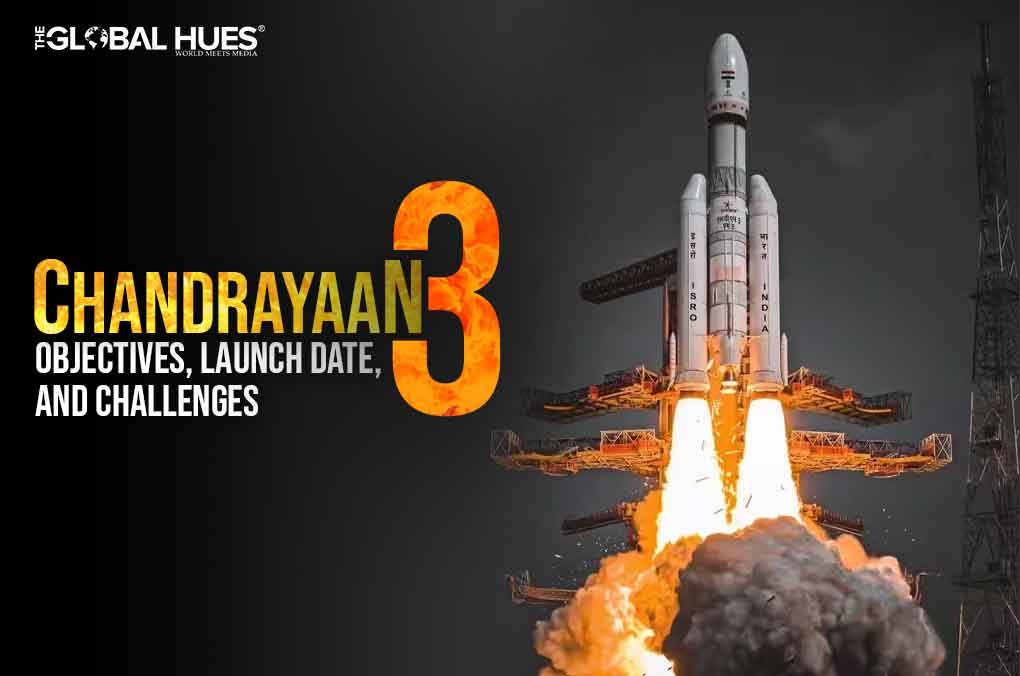India is all set to launch its third Chandrayaan mission
The Chandrayaan-3 will be launched on July 14, 2023, from SDSC (Satish Dhawan Space Centre) in Sriharikota, India.
Chandrayaan-3 is the next step in India’s lunar exploration program following the launch of Chandrayaan-2 in 2019. Despite successfully orbiting the moon and deploying the rover, the lander of Chandrayaan-2 crashed during the final descent; hence, Chandrayaan-3 will also address the issue that led to the lander crash and achieve a soft landing on the moon’s surface.
If the mission is successful, India will be the first to land a spacecraft on the lunar south pole. The lunar south pole is an area of interest for scientists as it is assumed to contain water in the form of ice.
Chandrayaan-3: Objectives of the mission
- To demonstrate a safe and soft landing on the lunar surface of the moon
- To demonstrate successful roving of the rover
- To conduct in-situ experiments
Instruments
Chandrayaan-3 will consist of a lander, a rover, and a propulsion module and will be equipped with several scientific instruments essential for the mission, which include a Spectrometer to examine the composition of the lunar surface, a magnetometer to measure the magnetic field, a high-resolution camera to capture images of the landing site, a drill to collect a sample of lunar soil, and an alpha particle X-ray spectrometer (APXS) to perform analysis on the samples.
- Spectrometer: This instrument will be used to examine the composition of the lunar surface by measuring the wavelengths of reflected light from the surface.
- Magnetometer: This instrument will measure the lunar’s magnetic field.
- Camera: This instrument will take images of the landing site and surrounding areas.
The rover will be equipped with the following instruments.
- Drills: This instrument will drill into the lunar surface to collect the soil samples.
- APXS: This instrument will perform an analysis of the collected samples.
Launch and landing
Chandrayaan-3 is supposed to be launched on a GSLV Mark 3 heavy-lift launch vehicle from Satish Dhawan Space Center in Sriharikota (SDSS), India, and the launch is scheduled for July 14, 2023.
The lander will enter lunar orbit after launch. It will then descend to the lunar surface and land in the south-polar region. Further, the rover will be deployed from the lander after the landing.
Expectations from Chandrayaan-3

The Chandrayaan-3 is expected to provide several scientific and important information, like
- The composition of the lunar surface
- Water (ice) presence on the south pole of the moon
- Information about the moon’s evolution over time
This mission is also expected to demonstrate India’s capabilities and involvement in space expeditions and set a path for future missions.
Challenges
- Environment: It is a very well-known fact that the moon’s environment is extremely harsh, with extreme temperatures and high radiation. The Moon doesn’t even have an atmosphere. All these environmental factors can pose a significant amount of challenge to the lander and rover, which may damage any scientific instrument essential for the mission.
- Landing: Due to changes in the extent of gravity on the moon in comparison to Earth, a precise and calculated landing of the lander is required. This is where Chandrayaan-2 failed.
- Communication: Everything comes down to communication. Even if Chandrayaan-3 succeeds in all aspects, it still requires continuous communication with the team on Earth; otherwise, it is of no use.
Despite these challenges, the Chandrayaan-3 is a very well-planned mission, the ISRO (Indian Space Research Organisation) is an established, researched organization with a long history of several important and successful missions. The organization is optimistic about this mission, and hopefully, they will overcome the difficulties in this mission and achieve the mission’s objective.
The Chandrayaan is supposed to be a major milestone for ISRO as well as for the whole country because of its unique objectives and matter of fact that this will be the first Indian spacecraft to land on the lunar south pole.
It is indeed a challenging mission, but it offers several opportunities as well. This mission has the power to not only yield scientific results but also to demonstrate ISRO and India’s capabilities in space exploration.
This mission is evidence of India’s growing capabilities and its desire to contribute its portion to global research about space and extraterrestrial bodies.
Summing Up
Chandrayaan-3 is the third lunar exploration mission, which is a follow-on mission to Chandrayaan-2. This mission is very important for India as its success has the power to demonstrate India’s capabilities in space research and for performing experiments on the south pole of the lunar surface.




